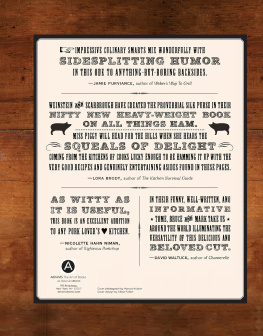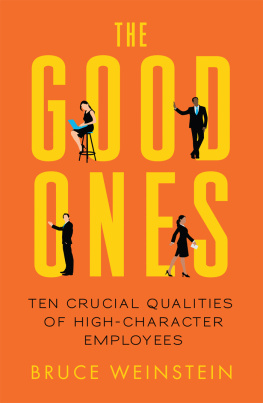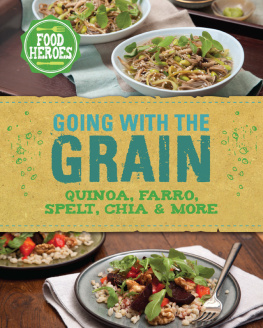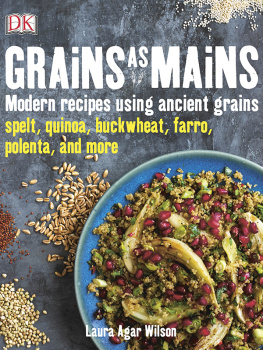

I worked for chaff and earning Wheat
Was haughty and betrayed.
What right had Fields to arbitrate
In matters ratified?
I tasted Wheat and hated Chaff
And thanked the ample friend
Wisdom is more becoming viewed
At distance than at hand.
Emily Dickinson, poem #1269

CONTENTS
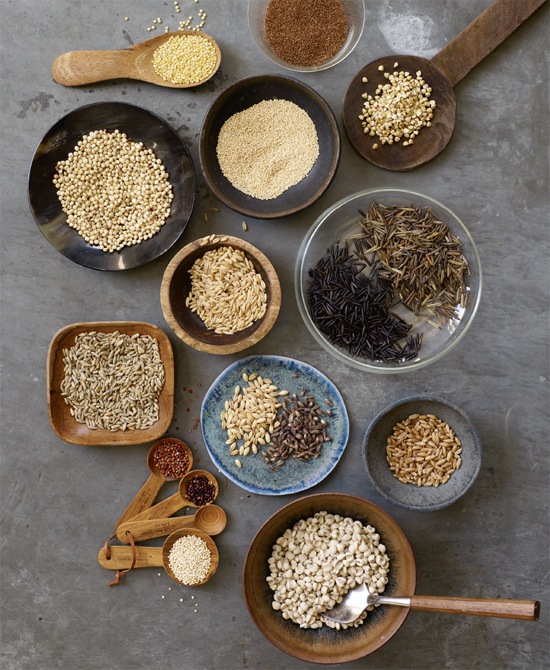
PERIMETER, CLOCKWISE FROM BOTTOM RIGHT: Jobs tears; white, black, and red quinoa; rye berries; sorghum; millet; teff; buckwheat groats; wild rice and cultivated wild rice; and triticale berries. CENTER FROM TOP: amaranth; oat groats; hull-less and black barley
INTRODUCTION

GOOD NEWSAND THEN MORE
You probably already know much of the good news about whole grains:
- Theyre terrific at helping you keep the pounds off.
Because of all the digestible and indigestible fiber in whole grains, you feel full and contentand are thus encouraged to eat less. All that fiber exits your stomach at a crawl, about four calories per minute. You not only feel sated more quickly; you also feel sated longer. By contrast, sugars leave your stomach at a gallop, about ten calories per minute. Thats why a mid-afternoon snack of a bowl of pudding will leave you rummaging again in the pantry for another snack even before you start dinner.
- Whole grains can keep your heart in fighting shape.
A Wake Forest University analysis of seven studies encompassing 285,000 people found that those who ate 2 servings of whole grains a day reduced their risk of coronary disease by almost a quarter. And whats a serving? Not much. Any one of the following counts as one: a slice of whole-grain bread, about 34 cup of whole-grain cereal, cup of whole wheat pasta, or as little as cup of cooked whole grains themselves. A single serving of many of the recipes in this book will set you up for the day.
- They can cut your risk for type 2 diabetes.
Because whole grains exit the stomach slowly and require increased digestive activity, they morph into glucose (a.k.a. brain and muscle food) at a fairly slow rateand so they give you a long, slow energy burn, not a short, aggressive insulin spike.
And theres still much more! A study published in The American Journal of Clinical Nutrition in 2011 found that those who ate a whole-grain cereal in the mornings significantly reduced their risk of hypertension. Whole grains can help lower blood cholesterol levels. Theyve been shown to fight gum disease. And some of the compounds in some whole grainslignans and oligosaccharidesfunction as prebiotics, stimulating the growth of good flora in your gut.
Suffice it to say, whole grains are a veritable medicine cabinet on the plate. But believe it or not, there are more reasons why whole grains are natures wonders. And these are the ones that interest us the most: the culinary reasons. For ustwo cookbook writers with 21 titles under our belts in 12 years, not counting the ones ghostwritten for celebrities, and not counting the countless articles and columns weve written for most of the food and health magazinesthese reasons may well be the most compelling:
- Whole grains are incredibly versatile.
We have a good friend who once said, Id be a vegetarian if I knew how to cook. When pressed to explain, she mumbled something about boiling a pot of quinoa and getting stuck with it all week. Shes not alone. Many of us think cooking a whole grain is nothing more than dumping it in a cauldron and then looking at a forlorn bit of beige in the colander later.
In fact, whole grains are up to the challenge of a world of cheffy techniques and preparations, stir-fries to braises, soups to salads, roasted this to fried that, vegetarian, vegan, or neither. Because of a complex interaction of carbohydrates, they absorb some flavors with nary a change and enhance others by suppressing bitter notes; they provide backtaste notes for blander ingredients and bring out the sweet or sour notes in more commanding ones.
- The range of textures and flavors is greater than almost any food group in the supermarket.
We love pork. And beef. And chicken. And rotisseried baby goat. But well also confess that theres a fairly small range among protein flavors. No, lamb doesnt taste like goat; however, theres a small continuum of flavors among various cuts from various animals. Of course smoked pork doesnt taste like wine-braised beef; but as you homogenize and standardize the cooking techniques among various cuts, you reduce the flavor range even more. For example, a broiled pork chop and a broiled flank steak can taste within spitting distance of each other. Sad to say, the taste of lobster isnt that far from that of shrimp. Nor halibut from bass. Yes, subtly differentbut on a small continuum.
Not whole grains! The range of textures and flavors is astounding: from the subtle sweetness of amaranth to the in-your-face sour/savory slapdash of spelt berries; from the soft, gentle luxury of teff to the molar-satisfying dankness of hull-less barley; from the nutty earthiness of red rice to the slightly musky, grassy give of brown. Whole grains can hit four of the five flavor nodes without a problem: sweet, sour, bitter, and umami. You can add your own salt.
- Whole grains are the gourmet ingredient hiding in plain sight.
For us two food writers, this is the big one. Let the backyard boys have their whole pigs in pits. Its been done. Many times. But not black barley. Or Jobs tears. Or rye berries. Maybe as side dishes, but rarely as the center of the plate.
You want to pump up your foodie creds? An entire category is hiding in plain sight, right on the shelves of the corner supermarket. You dont need to dig a pitor go all the way around the world to discover some esoteric ingredient. Whole grains have been here all along, even if some of us have passed them by on our way to the smoked jowls and organic fennel. We should stop and consider the creaminess of whole-grain farro, the spike of triticale, the snap of rye berries.
- Despite being a gourmet find, whole grains wont break the bank.
A brown rice casserole will put you back a few bucks; a standing rib roast, a chunk of your IRA. And when you buy an affordable bag of millet or buckwheat, youre also stocking up for satisfying meals for the future, not just for tonight.
- Finally, whole grains are deeply connected to us as humans.
Theyre founder crops, some of the first things we learned to cultivate back in the shadows of history. By relishing whole grains, we connect ourselves to our past in a deep and fundamental way. Whole grains led our ancestors to settle in large groupsand thus gave us what we now call civilization and even culture. We grouped together to be near the grain stores; we became social (not just familial) creatures; we began doing things for larger and larger gathered groupsa.k.a. audiences. Voila, Mozart and Monet.
Given all that, why arent most of us eating more whole grains?
Next page

